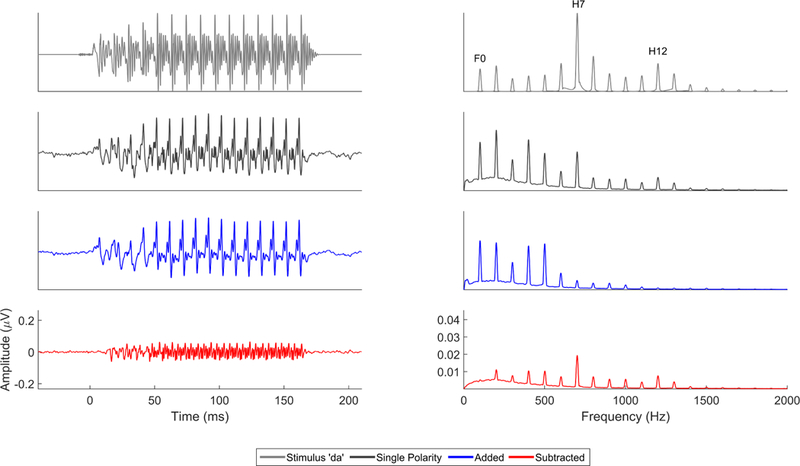Figure 8.

FFRs collected from the same participants with (black) and without (red) jitter in the timing of the stimulus presentation. Subtle variations in the presentation timing of the stimulus can have catastrophic effects on the recorded response, serving to low-pass filter the response with a lower high-frequency cutoff as the jitter increases. Thus, as timing jitter increases, response peaks will be increasingly ablated, with the largest effects being on the highest frequencies. Magnitude of the response is severely diminished in the time domain in the single polarity, added, and subtracted responses (top), which makes peak-picking difficult. The frequency encoding is also affected. The response becomes almost entirely the F0, though the magnitude of F0 encoding is diminished compared to when there is no presentation jitter (bottom).
